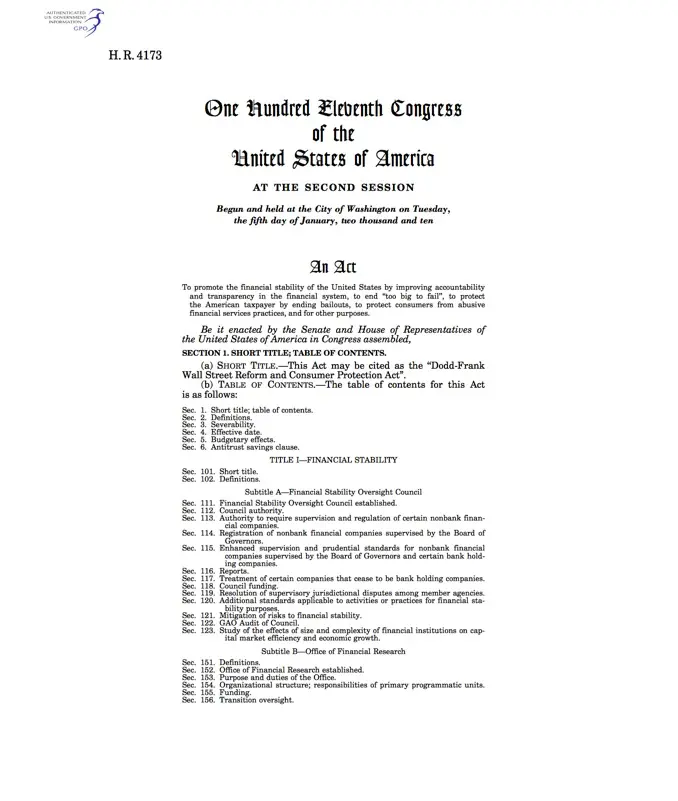You are about to get really mad at your Realtor … and your lender … and your attorney.
And you know what? It isn’t our fault.
Beginning in late 2015/early 2016, the way real estate transactions are closed will change and change substantially. Since becoming licensed in the early 1990’s, this is by far and away the most fundamental structural change I have even seen in our industry.
Dodd – Frank and the CFPB
In 2010, the Wall Street Reform and Consumer Protection Act (also known as Dodd – Frank) was signed into law by President Obama. With its signing, Dodd-Frank brought sweeping change to the way the financial markets were regulated. It also gave birth to the Consumer Financial Protection Bureau (CFPB).
Dodd – Frank (and the CFPB) was created in direct response to the financial crisis. It was designed to put more controls in place, as well as harsh penalties for intentional fraudulent practices, to prevent another complete economic collapse on the scale of what happened in 2008. And as the real estate market (ok, lending) was one of the chief culprits in the meltdown, it too, fell under the changes brought by Dodd – Frank.
Fast forward from 2010 to 2016, and we are now seeing the full impact of Dodd – Frank. The changes are far from all positive.
The Financial Crisis
One of the main goals of Dodd – Frank was to protect a largely uninformed public from unscrupulous and predatory lenders.

During the run up to the crash of 2008, a largely unregulated lending market began to create mortgage products which were intentionally disingenuous. These highly leveraged adjustable interest only loan products were not designed to help someone own a home, but to extract as much in interest payments as possible. The loan products created mortgage time bombs as rates adjusted upwards and payments on the loans increased well beyond buyer’s ability to repay them.
Those who created the loan products were able to insure them against default (which was totally insane and probably the biggest cause of the crisis) and thus carried no risk … which only encouraged riskier and risker behaviors. Cracks appeared in the financial dam in late 2007 and by summer of 2008, all forms of lending effectively ceased, largely freezing the real estate market in place.
Know Before You Owe
Would 2008 have happened if the borrowers of the world knew what they were borrowing? Hard to say.
Regardless, it appears that the CFPB does feel that way and thus, the changes now being put in place. In order to create an environment where consumers were far more certain about the products they were signing on for, the CFPB has adopted the philosophy of ‘Know Before You Owe‘ in an attempt to save borrowers from the evil lenders.

The key to protecting the borrower from the lender, in the opinion of the CFPB, is more time, longer forms and harsh penalties. By completely revamping the lending practices of mortgage originators, the CFPB is effectively forcing lenders to disclose more fully and far earlier than before with extremely large penalties for non-compliance. Hopefully, consumers will have more time to comprehend the loan products they are committing to and lenders will be far more reticent to push the boundaries of good faith knowing fines exist as large as $1M per day for willing non-compliance.
Disclosure Earlier is Good, Right?
An informed consumer is a better consumer … this cannot be argued. Forcing the lenders into better disclosure earlier in the process means a better informed client. Once again, this is a good thing.
In order to force lenders to fully disclose earlier, the CFPB has demanded two major changes. The first change is in how disclosure happens. The closing statement that had been used for decades is being replaced by new form that is both longer and in more detail. Effectively, the Truth in Lending Statement and the HUD 1 Closing Form (aka Closing Statement) are being merged into one mega-form now called the Loan Estimate and Closing Disclosure. It can be argued that this change is more annoying than structural and will not really have an impact other than some short term confusion as attorneys, lenders and Realtors get familiar with the new terminology.
The second, and far more impactful change, is that all of these documents must be delivered to the borrower a minimum of 3 days prior to closing. Gone are the days when the HUD would arrive 30 minutes prior to closing and everyone saw it for the first time when they sat down to sign paperwork and made any and all adjustments to the form while sitting at the closing table. The closing attorney (or title company) had the power to make minor adjustments to the closing statement in real time to fix errors or omissions. No longer.

You Only Hurt the Ones You Love
On the surface this sounds like a great idea … lets get everything ironed out earlier! Having a chance to review the package well in front of closing feels much better than hoping that the closing statement will be correct when you arrive at closing with movers on the way and your sick kid at your sister-in-law’s house.
But what happens if the statement is wrong?
Any amendment requires the 3 day process to begin anew. Imagine going to a walk through and seeing that a repair was not done correctly and the seller and buyer agree to escrow $1,000 for the repair … guess what?? You gotta wait ANOTHER 3 days to close. Or what if the builder forgot to show a $2,500 credit for the upgraded appliance package? Yep, 3 more days…
The ability to make adjustments to the closing statement is now, for all intents and purposes, gone. In its place is 3 days of pain, stress and frustration while the paperwork is amended, resubmitted and subject to another mandatory 3 day review period.
When you think about the impact this will have on closings where multiple homes are expected to close in sequence, you can begin to see the trouble this will cause. If any one of the loans in the chain requires modification, it will slow down the process by a minimum of 3 days.
And heaven forbid if you have used an internet lender in a different time zone. I can’t imagine the pain this will cause.
While I agree with full and complete disclosure, the CFPB has not anticipated the ancillary impact this requirement will have. Removing the ability to make legitimate modifications to the closing statement is not consumer protection.
Marginal Buyers Lose
The sequential closing is a hugely important part of our the market, especially for buyers who have little equity and are unable to qualify without the sale of their home. The 3 day right to review will wreak havoc on the closing process that we have all become so accustomed to and understand so well. By outlawing what are benign and minimal, but necessary, last minute changes to the closing statement and forcing a minimum of a 3 day wait upon the parties is either going to:
- Discourage the practice and force marginal buyers to stay in place
- Force many last minute panic moves or late closing penalties on the marginal buyer
- Force buyers to accept incorrect closing statements due to penalties for non-performance exceeding the incorrect costs on the closing statement
I am not sure that this is what the CFPB intended.
Sorry…
I am already rehearsing my apology.
The first time the problems arise (and they will), the buyers and sellers of the world are going to get angry. ‘What do you mean we aren’t closing for another three days?!?! The movers are on the way!!! My new job in Poughkeepsie starts Monday!!’
Sorry. I really cannot help.
I fully expect to take many daggers because of someone else’s mistakes and there will be nothing that I can do about it. Nor can the attorney, nor can the lender.
At the end of the day, the old world is no more and we now have a far more regulated and inflexible process that, I feel, will cause more harm to the consumer than protection. The lending institutions of the world that caused the crash are no more. Enacting rules to prevent their fraudulent practices is akin to closing the barn doors after the horses are long gone.
But the doors are now closed and those who are left in the barn are now trapped with far less room to maneuver.





